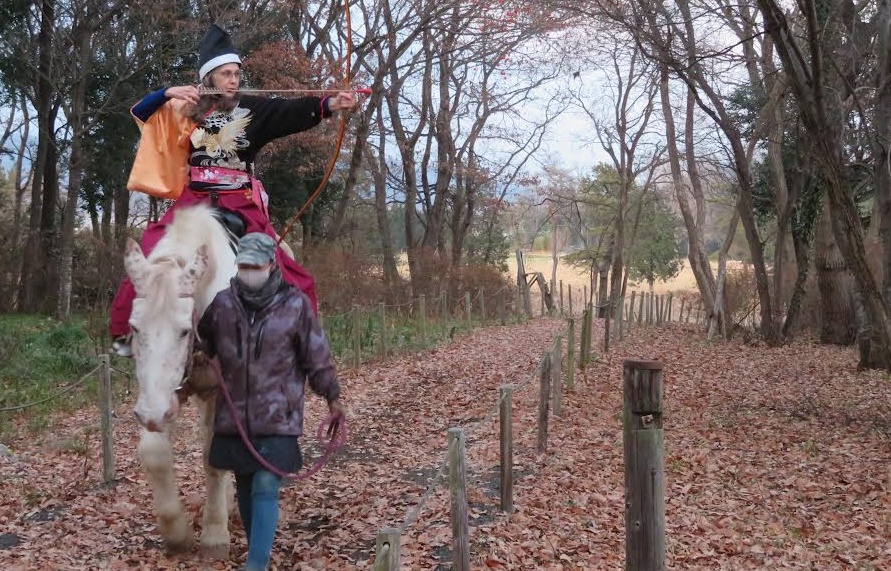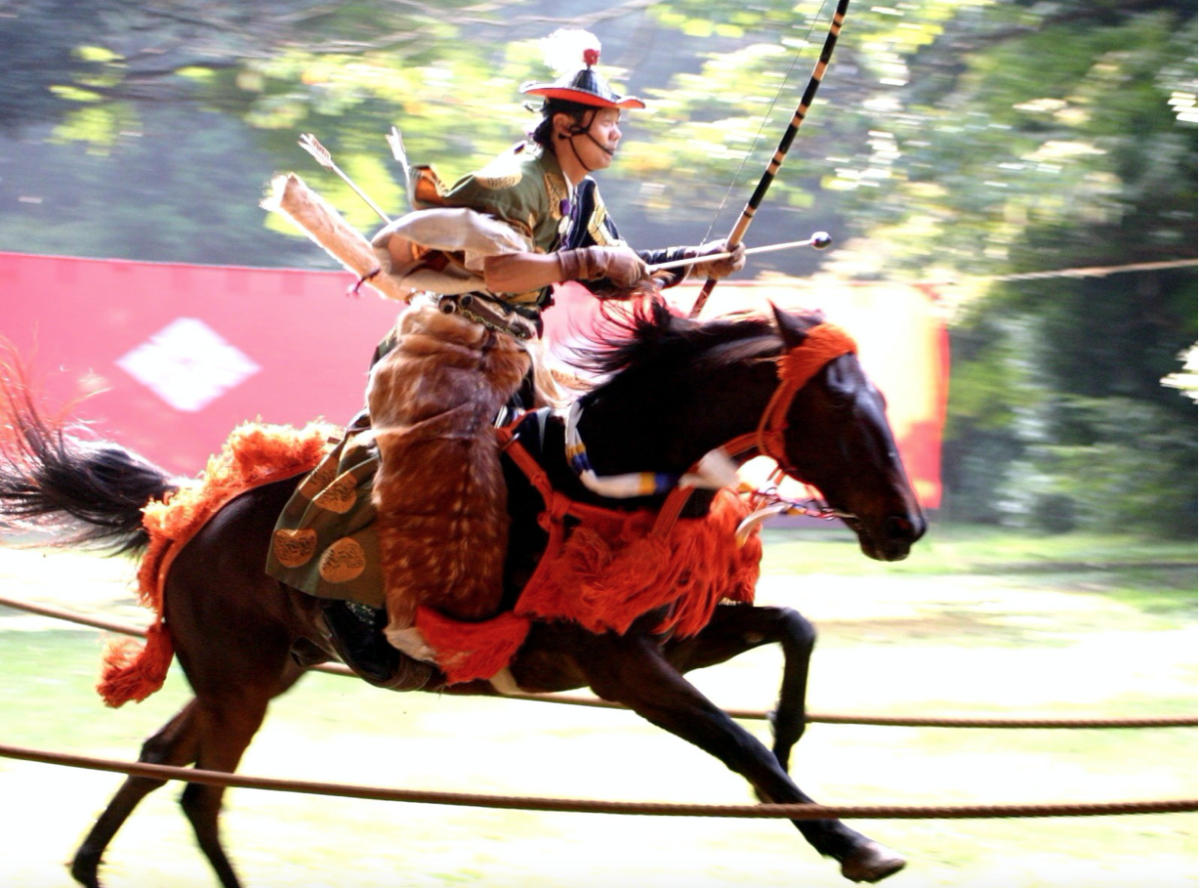Learning Japan's Ancient Horseback Archery

Samurai on Horseback

Photo: Wikipedia Commons
As the horse thunders along a narrow track, its rider, outfitted in traditional samurai garb, pulls an arrow from his belt, nocks it, draws, and fires at his target. He repeats this not once, but twice more in rapid succession. He does not miss. This is yabusame, Japan’s traditional horseback archery.
Today it is largely performed at shrine festivals across Japan as an offering to the gods, but its roots date back to the late twelfth century, when Shogun Minamoto Yoritomo (1147-1199) introduced it as a competition to encourage his warriors to improve their ability to shoot arrows while mounted, then a necessary military skill.
Getting Dressed for the Occasion
I arrived at Yamato Horsepark with a couple of friends on a mild winter afternoon. We were quickly whisked into a changing facility where our instructor, Fujita-san, began to pull various garments off shelves for us to wear. He was quick and matter of fact, and we had no choice but to let him dress us. Fujita-san soon realized that the hakama pleated trousers would not close properly over jeans. Fortunately, it being winter, we were all wearing leggings, so modesty was preserved even when the jeans were shed.
Finally, we were all outfitted in kimono, hakama and an igote. The latter is a special vest/overcoat with a long sleeve on the left arm to protect it from the bowstring while shooting and no sleeve on the right to allow complete freedom of movement when drawing the bowstring. A bright sash was last, to round things out. Fujita-san quickly popped safety helmets on us and piled us onto the back of a pick-up to drive us a few hundred meters to a wooded area of the farm, where our lesson began.
Learning to Handle the Bow
We each received three arrows with bulbs on the end instead of arrowheads and were told to tuck them into our sash. Then we were given our bows, each over two meters long. Fujita-san demonstrated how to hold the bow and how to draw it by holding it above our heads with our left arm, catching the bowstring, also above our heads, with our right hand. We were then instructed to lower both arms until the left arm was perpendicular to the ground at a ninety-degree angle to the body. Fujita-san explained that this motion automatically pulled back the bowstring without requiring substantial muscle power.
Next, we learned how to nock arrows and hold them in place by curving our thumb and forefingers around the bowstring. This is completely differently than in Western archery, which holds the nocked arrow between the index and middle finger. We all fumbled a bit, but eventually got the hang of it.
Finally, it was time to try to hit the target, a couple of dozen meters away. On my third try my bowstring snapped as I was lowering my arms, leaving my outstretched left arm holding the bow, while my right arm was poised but empty. It took a few seconds for me to realize that had happened. Fujita-san quickly assured me that I had made no mistake--bowstrings can break from fatigue. I was soon handed another bow and returned to practicing.
Shooting While in Motion
After a few more tries, Fujita-san declared us sufficiently seasoned to try shooting while in motion. He did not think we were quite ready to try this from horseback, so our initial practice run was made sitting on a saddle placed on a horizontal barrel fixed onto the back of his pick-up.
Fujita-san’s practice track was just a little wider than the pick-up. The length—218 meters—and the distance between the three targets along the way, is unchanged since it was fixed in the Kamakura period ((1185–1333). Each target was a square of red plywood fixed in a diamond position atop a pole. The pickup moved along at a sufficiently slow speed that we could each nock our arrows in time to shoot at all three targets. While we did not hit them all, we hit enough to gain a bit of confidence.
At last we were ready for the “real thing” and Sakura, an 8-year-old gelding, was led out.
Mounting Up
You may be asking yourself how we could control the horse to run the track, since both arms are fully occupied drawing back and shooting the arrows. Experienced riders, like Fujita-san (an octogenarian who, it seems, started riding about the same time as he started walking) steer with their knees.
We did not have time during our lesson to develop that level of horsemanship, so instead, one of the farmhands led Sakura along the track as we concentrated simply on staying mounted while hitting the targets.
Although the photograph is out of focus, you can see the blur of the arrow just beyond the target, as it breaks in two. Bullseye!
Thankfully, Sakura was walking rather than going at a full gallop, so we each managed to put it all together and make a credible show of it. Even when moving at a walking pace, it was exhilarating to shoot off the arrows, hear the crack of the arrow hitting the target and catching sight out of the corner of my eye of bits of timber flying as the target was broken by the flying arrow. By the time, we had finished the course, I could fully understand the attraction of this sport.
How to Get There
Yamato Horse Park is located in Sakuragawa City, Ibaraki Prefecture, five minutes by car from Niihari Station on the JR Mito Line. This is about an hour and a half from Tokyo Station if you take the Tohoku-Hokkaido Shinkansen and change to the Mito Line at Oyama. The horse park also offers horseback riding lessons and trekking courses.
A yabusame lesson (¥17,000) can be booked by phoning 0120-666-875 between 9:00 and 18:00 (Japanese language only).
https://yamatohorsepark.com (Japanese)



